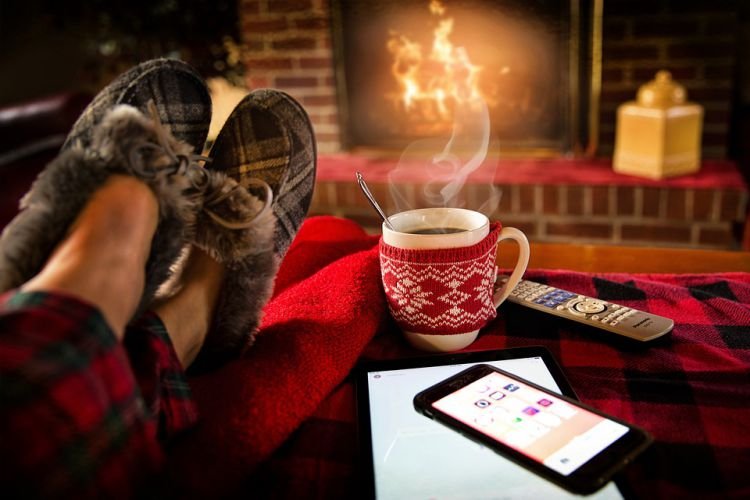 Winter should be all about indoor coziness and staying warm, sitting in front of your fireplace and basking in the heat without worrying about maintenance issues. However, this comes at the cost of preparing your home ahead of time.
Winter should be all about indoor coziness and staying warm, sitting in front of your fireplace and basking in the heat without worrying about maintenance issues. However, this comes at the cost of preparing your home ahead of time.
Your home may experience severe weather with a higher energy burden throughout the winter, so proper insulation and preparation are crucial for your comfort and safety regardless of where you live. So, if you think you are exempted from this because you live in California, you are sadly mistaken. While winter temperatures in most of California are cool to mild, the far north of the state and the high mountains experience freezing temperatures and snow; and let’s not forget the winter rainy season. Thus, by prepping your home, you will stay warm and safe during storms and any other issues, no matter your geographic location.
Below are a few ways you can prep your home for the winter season:
1. Keep Water Heaters Ready
Taking a shower in winter is only possible if you have a water heater installed at home. It’s a basic necessity to survive winters smoothly.
Since water heaters use a lot of energy to heat water, they are usually required to be serviced before you can use them again in the winter.
Homeowners with good sense know to weigh the rising expense of repairs against the cost of a replacement. You can check for leaks and strange noises and consider getting a new unit if the temperature of the water abruptly shifts from hot to cold. So call a professional immediately. Whether you are in the market for maintenance services or water heater installations Mission Viejo CA has several reliable plumbers like Severson Plumbing who can help you. A professional will better detect a leak or another issue and recommend the best option between repairing and replacing your water heater.
2. Test Your Heating System
You need to test your heating system beforehand at all costs if you want to have cozy, uneventful winters.
Heating systems burn fuel to produce heat, so there’s a great chance of them leaking fatal carbon monoxide into your home. To prevent this, you can install carbon monoxide detectors in your home to ensure safety.
A dirty or neglected heating system has to work harder than necessary to produce warmth and maintain the temperature. Furthermore, you may find that your heating system is not reaching the intended set point on your thermostat. It can be due to faulty system parts, leaking ductwork, and decreased airflow. Whatever the reason, you have to get them checked and replaced before the case becomes severe.
3. Check Windows For Repairs
If you notice chilly air or a breeze coming into a room while all windows are closed, it’s time to inspect your windows for cracks or gaps. Additionally, you may observe condensation accumulating within your windows or in the spaces between your window panels, indicating you need to do something about them.
When windows get old or cracked, they let chilly outside air inside while allowing warm air from your heater to escape. This can cause your home to become cold and uncomfortable and forces your HVAC system to work harder than it has to. It also hikes utility costs. Thus, ensuring that your windows open and close properly is essential. If they do not function properly, your windows need to be replaced or repaired.
4. Inspect Doorways
Just like windows, doors also have to be inspected now and then for loosened screws, squeaky sounds, cracks, and drafts. The door’s screws can loosen over time due to variations in humidity and temperature, just as door binding. Even though it might not seem like a big deal, this issue might aggravate problems in winter. Your door may slump and not sit properly within the framework due to loose screws and hinges, making it rub or cling against the frame. Additionally, sometimes wooden doors may expand or shrink because of changing weather, which might cause them to get stuck. So, the best thing you can do is install a new door before winter arrives.
5. Have a Properly Insulated Roof
Insulating your roof and attic properly can prevent leaks and property damage. It can also significantly contribute to keeping your house warmer. Insulating your roof means your heaters won’t have to run as hard because insulation helps maintain consistent temperatures within the house, thereby lowering the amount of energy used.
Snow, mold, rodents, and other factors can cause damage to attic insulation. If the insulation in your attic is deteriorated or outdated, you might want to replace it. Given that you save significant amounts of money on energy every day, replacing your insulation is an investment rather than a cost.
6. Chimney Cleaning
The chimneys in your home may experience significant deterioration over time. The interior may begin to decay due to harsh chemicals, fire, smoke, and high temperatures and be battered by strong winds and copious rain. In addition, animals like birds, bats, and squirrels frequently construct their nests in chimneys, which can cause damage if not removed. All this makes it crucial to conduct an annual inspection of your chimney. Once it is free of obstructions and creosote buildup, fireplaces can burn more efficiently as more oxygen can enter the firebox to feed the flames, and smoke will be able to escape more efficiently.
7. Gutter and Drain Cleaning
Water backups from clogged gutters and drainage systems can exacerbate wintertime issues, so it’s essential to clear the debris, like fallen leaves, for the water to flow through the drains smoothly. An obstruction may lead to ice accumulation above the gutters, which can cause damage to the roof due to its weight. Also, excess water accumulation can strain the gutters, causing them to droop or move out of place. This becomes a continuous process where each stage exacerbates the one before it until the gutters collapse.
8. Check Outdoor Lightening
The wetness and winter weather can destroy your outdoor lighting system if it is old or has exposed wires. Also, some places may have a propensity for hailstorms that require your lighting and cabling to be waterproof and insulated.
To avoid any issues, it is best to call a professional to inspect your outdoor lighting to determine if any repairs or replacements are required. If you plan to examine the lighting yourself, then remember to shut down the power source before you start.
One thing you should know is that conventional and LED light bulbs can experience a shorter lifespan due to extreme conditions and temperature changes. So instead of traditional lighting, opt for security and landscape lighting systems that typically work longer during the winter due to less daylight.
Conclusion
No matter where you live, preparing your house for the winter can save energy costs, make your home more pleasant, and give you peace of mind that everything is in working order. With the ways listed above, we hope you can start prepping for winter and unwind when the weather finally turns chilly.




